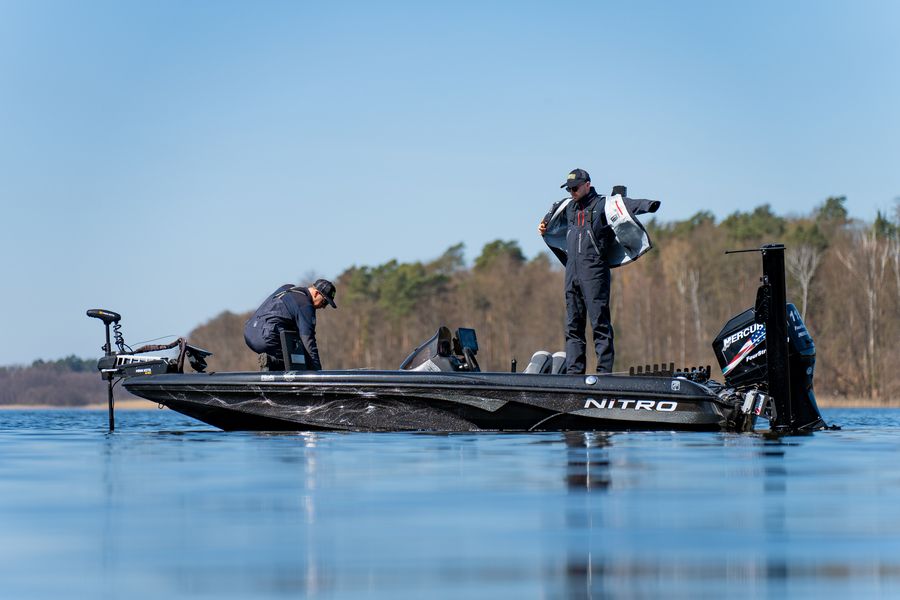How to Anchor Your Boat for Fishing Like a Pro
Whether you’re casting for bass on a quiet lake or chasing redfish along the coast, anchoring your boat properly can mean the difference between a successful fishing trip and a frustrating one. Anchoring your boat isn’t just about stopping it from drifting — it's about positioning it strategically to keep you over the fish. In this guide, you’ll learn how to anchor your boat like a pro, how to choose the right equipment, and expert tips for a secure and stable hold.

What Is the Best Way to Anchor Your Boat?
The best way to anchor your boat depends on the water conditions, bottom type, wind, and current. However, professional anglers agree on some core techniques:
-
Approach into the wind or current: Slowly bring the bow (front) of your boat into the wind or current, depending on which is stronger.
-
Lower, don’t throw: Never toss the anchor overboard. Lower it gradually to prevent tangling and ensure a straight set.
-
Scope it out: Pay attention to your anchor line length. A good rule of thumb is a 7:1 scope—seven feet of anchor line for every foot of water depth.
-
Set the anchor: Once the anchor hits bottom, let out enough rope, then slowly reverse your boat to help the anchor dig in.
-
Tie off securely: Once the anchor is set, tie it off to a bow cleat—never the stern—to maintain boat stability.
How to Choose the Right Anchor for Your Boat
Anchoring successfully starts with a solid understanding of the underwater terrain you'll be dealing with. The seabed composition—be it mud, sand, rock, or grass—directly affects how well your anchor will hold. Since each type of bottom has its own grip characteristics, it's important to match your anchor to the environment.
For instance, if you're anchoring in sand or mud, a Fluke or Danforth anchor is typically the most effective, especially for small to medium-sized boats. These anchors dig in quickly and offer reliable holding in softer substrates. If you're expecting more variation in bottom conditions, a plow-style anchor offers excellent versatility and dependable holding across a range of surfaces, including grass and mixed seabeds. For calm inland waters or when fishing from a lightweight boat like a jon boat, a mushroom anchor may be sufficient, as it relies on weight rather than flukes to hold position.
Boat size is another critical factor. Larger or heavier boats generate more force, especially in wind or current, so they require not just a more substantial anchor but also a longer and heavier length of chain to ensure the anchor sets properly and maintains its grip. The right combination of anchor type, size, and rode length ultimately determines how securely your boat will stay put.
Advanced Tips for Pro-Level Anchoring
1. Master Anchor Types & Matching Bottom Conditions
-
Fluke/Danforth: Best for sand or mud, not great on rocky bottoms.
-
Plow (e.g., CQR, Delta): Good all-rounders, especially for grass or mixed bottoms.
-
Rocna, Mantus, or Spade: Top-tier for fast-setting and high holding, excellent in mud, sand, and grass.
-
Bruce/Claw: Decent in most bottoms but weak in heavy mud.
2. Use Adequate Scope—But Know When to Adjust
-
Standard scope: 7:1 (rope:depth) is ideal for strong hold.
-
For tight anchorages, a 4:1 with a heavier anchor and chain can suffice—but watch weather shifts.
-
Tidal range: Always calculate based on high tide depth, not current depth.
3. GPS + Depth Sounder Anchoring
-
Use your GPS/chartplotter to mark your drop point.
-
After setting the anchor, watch your position on-screen to verify the anchor has set and isn’t dragging.
-
Use the anchor alarm function to alert if your boat moves beyond a set radius.
4. Tidal, Wind, and Current Triangulation
-
Don’t just consider current wind—forecast the shift over the next 12–24 hours.
-
In areas with strong currents, your boat may “sail” around the anchor.
-
Use a Bahama moor (two anchors off the bow, 180° apart) for tidal reversals.
-
Or use a bridle or snubber system to reduce yawing/sailing at anchor.
Final Thoughts: Anchor Your Boat the Right Way
Mastering how to anchor your boat isn’t just about staying put—it's about optimizing your fishing efficiency, safety, and results. From choosing the right anchor to applying the best positioning techniques, anchoring like a pro gives you the confidence to fish smarter.
Whether you’re out for a relaxing day on the water or entering a tournament, the best way to anchor your boat is the one that keeps you focused on fishing, not fighting with your anchor.
#CATALOG_REVIEW#
